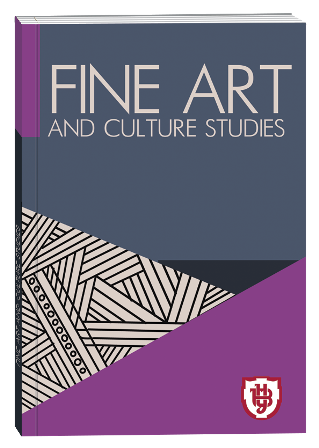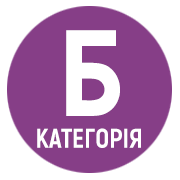CURRENT TECHNOLOGICAL PRINCIPLES OF CREATING ART OBJECTS IN THE PUBLIC SPACE OF CITIES AND PARKS IN EASTERN UKRAINE IN THE 2000S
DOI:
https://doi.org/10.32782/facs-2023-4-17Keywords:
visual art, monumental art, public art, digital technologies, digital technologies, interactive art, communication practicesAbstract
The article examines the current technological foundations of creating art objects in the public space of cities and parks in eastern Ukraine in the 2000s. Using the example of art objects in the cities of Kharkiv, Donetsk, Luhansk, Zaporizhzhia, and Dnipro, the author examines the impact of public art and modern digital technologies, such as contemporary monumental art and interactive, on the quality of art projects in open space. Examples of successful implementations and their contribution to the cultural and social context of the cities of eastern Ukraine are considered. The importance of using modern technological principles to intensify the interaction between artists and the community and to create open platforms for creativity and exchange of ideas in public space is emphasized. Analyzing the achievements of art historians in the field of public art in Ukraine (O. Chepelyk, N. Musienko, etc.) and abroad (M. Cohn, Phillips, S. Lacey, M. Oswald, etc.), we note that the problem covered is in the center of attention of contemporary art and art history. The scientific novelty lies in the consideration of current methods of creating public art and the use of digital and interactive technologies as one of the key catalysts for increasing the interaction between artists and the audience. The author emphasizes the practical importance of creating art objects that can be perceived and interacted with using smartphones and other gadgets in terms of accessibility to the viewer and low cost of execution, in order to aestheticize public space and make it more mobile. Based on the visual and theoretical material of the study, the author has identified the prospects of combining art and technology in public art projects to promote not only creative expression, but also the manifestation of current sociocultural tasks and the formation of new "democratic" models of communication (Lacy. S.). The article uses the methods of open source analysis, literature analysis, observations and empirical research, as well as the study of public art projects in the eastern cities of Ukraine. The purpose of the article is to study the current technical and technological foundations of creating art objects in the public space of cities and parks in eastern Ukraine in the 2000s. Taking into account the industrial context of the cities of eastern Ukraine, the development of public art in combination with modern technologies expands the possibilities of communication, cultivates an independent viewer, allows him to become a participant in the creative process and directly influence his surrounding visual space.
References
Єфімова А. Сучасні художні практики в урбаністичних просторах та формування міської ідентичності. Наукові записки Національного університету «Острозька академія», 2014, №14, Ч.1, С.236 URL:http://eprints.oa.edu.ua/2761/1/28.pdf (дата звернення 14.09.2023).
Заєць Д. О. Публічне мистецтво та актуалізація соціальної пам'яті у міському просторі Харкова. 2010. URL:https://sites.google.com/site/laborskult/ projects. (дата звернення 14.09.2023)
Мусієнко Н. Public Art у просторі сучасного міста. Київська практика., 2010., Вип. 7. С. 136-149.URL:http://www.nbuv. gov.ua/portal/soc_gum/Spdr/2010_7/136-149.pdf. (дата звернення 14.09.2023).
Новіков М. Сфери практичного використання технології AR в образотворчому мистецтві. Актуальні питання гуманітарних наук : міжвузівський збірник наукових праць молодих вчених Дрогобицького державного педагогічного університету ім. Івана Франка. 2021. № 38. С. 28–33. URL:https://doi.org/10.24919/2308-4863/38-3-5 (дата звернення 14.09.2023).
Чепелик О. В. Взаємодія архітектурних просторів сучасного мистецтва та новітніх технологій або мультимедійна утопія. К: "Хімджест", 2009. 260 с.
Kwon M. For Hamburg: Public Art and Urban Identities. URL: http://www.art_omma.org/issue6/text/kwon.htm.(access 14.09.2023)
Lacy S. Leaving Art: Writings on Performance, Politics, and Publics, 1974–2007 / S. Lacy. Duke University Press, 2010, p. 424.
Ostwald M.J. Public space and public art: the metapolitics of aesthetics. In: Back to the City: Strategies for Informal Urban Interventions: Collaboration between Artists and Architects. 2009, p. 94-101. URL:https://novaprd.newcastle.edu.au/vital/access/services/Download/uon:4275/ATTACHMENT01?view=true(access 14.09.2023)
Bingham-Hall, J. Public-art as a function of urbanism. The Everyday Practice of Public Art.2015, Р.161-176. URL:https://www.researchgate.net/publication/316097094_Public_art_as_a_function_of_urbanism(access 14.09.2023)
Phillips, P. C. Temporality and public art. Art Journal. 1989,48(4), 331-335. URL:https://homepages.hass.rpi.edu/ruiz/IDIfall13/readings/Seine%20 Webster%20(eds)%20Phillips%20Temporality%20and%20Public%20Art.pdf (access 14.09.2023)
Deutsche R. The question of "public space». In Public Space Reader.2021, pp. 280-289). URL:https://www.researchgate.net/publication/259127550_The_civility_of_social_capital_Public_relations_in_the_public_sphere_civil_society_and_democracy(access 14.09.2023)







